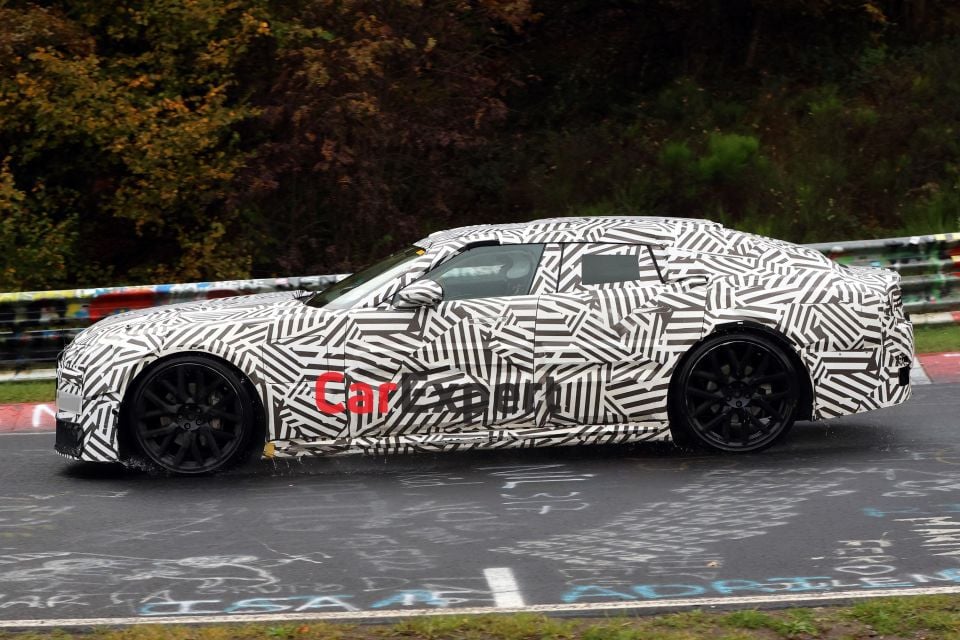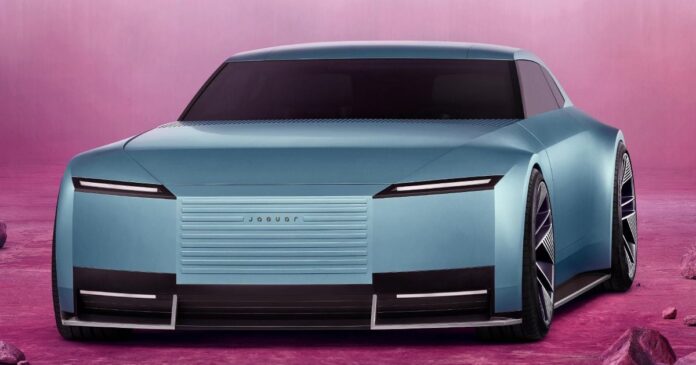Unless you’ve been living under a rock, you’d know about Jaguar’s controversial decision to become a more exclusive, electric-only brand, publicised via a garish and widely criticised ad campaign.
But had the decision not been made to pivot the Indian-owned British auto brand from tackling BMW to taking on Bentley, Jaguar would potentially have a revitalised portfolio that would have included a new flagship SUV and a new sports car.
Ian Callum, who was the design director of Jaguar until 2019, said at a live recording of the Autocar My Week in Cars podcast that when he left the company he was working on a new SUV to replace both the F-Pace and I-Pace; a new sports car to replace the F-Type; and a new flagship, Range Rover-sized J-Pace SUV.
The next-generation (X391-series) XJ limousine was designed with a single wheelbase length instead of separate short- and long-wheelbase configurations, a move BMW also made with its latest 7 Series and i7.
CarExpert can save you thousands on a new car. Click here to get a great deal.
It was also designed to accommodate a combustion engine, again much like BMW’s latest flagship – and something that would have worked out well given the recent decline in demand for high-end EVs.
“I thought [the next-generation XJ] was pretty nice… It was taller. We wanted the car to be more stately, which is something I always fought against because I always felt Jaguar was more racy than stately, but we produced something that was really very elegant and worked well and it was an all-electric car,” Mr Callum told the podcast.
“Although, it was packaged to take a six-cylinder engine, if need be,” he added, likely meaning it would have shared six-cylinder engines with the Range Rover and Range Rover Sport, which also used its Modular Longitudinal Architecture (MLA).
That’s in contrast with Jaguar’s upcoming flagship, based on the Type 00 concept, which won’t support internal combustion engines despite having an extraordinarily long bonnet.

And speaking about long bonnets on EVs, Mr Callum had this to say: “I look at all these new electric cars and they look like they were designed 20 years ago. I don’t understand why they got long bonnets on them.”
“Why would you build an electric car with a long bonnet on it?” he mused. “It’s not got a V12 in there.”
The XJ was set to go electric-only, before demand for high-end electric vehicles (EVs) stumbled. But long before even then, the sedan was scuttled at the 11th hour by Thierry Bolloré, the short-lived JLR CEO who was only in the top spot from 2020 to 2022.
“Julian [Thomson] took over [from me as design director], then there was all sorts of kerfuffle… There was new management brought in at that point, and all these lovely cars were stopped,” Mr Callum told the podcast.
The production version of the Type 00, thus far the only new-era Jaguar to be previewed in concept guise, is now set to be revealed in 2026 following a recent delay.

But Mr Callum conceded Jaguar’s previous strategy of trying to be the British BMW wasn’t working in its favour.
“That was perhaps part of the problem of Jaguar. We were racing the German brands, racing against them too obviously,” he said, citing the XE in particular.
“The XE was a better car than the 3 Series and indeed the Audi [A4] by far, I’m sure somebody might disagree but it’s a fact, and the reality was the suspension in them and the drivetrain and everything else was superior. It was superior… but also more expensive.
“That was Jaguar’s biggest failing. It frustrated me. It wasn’t necessarily quality, it wasn’t the power output, it wasn’t the handling, I don’t think it was the styling. It was the fact they cost too much to build – that was the biggest failing.
“We couldn’t compete with the Germans on that front. There’s no economy of scale – 40,000 cars versus half a million.”
MORE: Explore the Jaguar showroom
